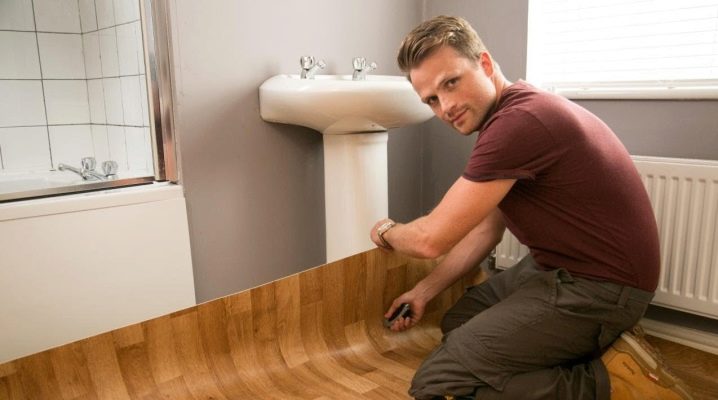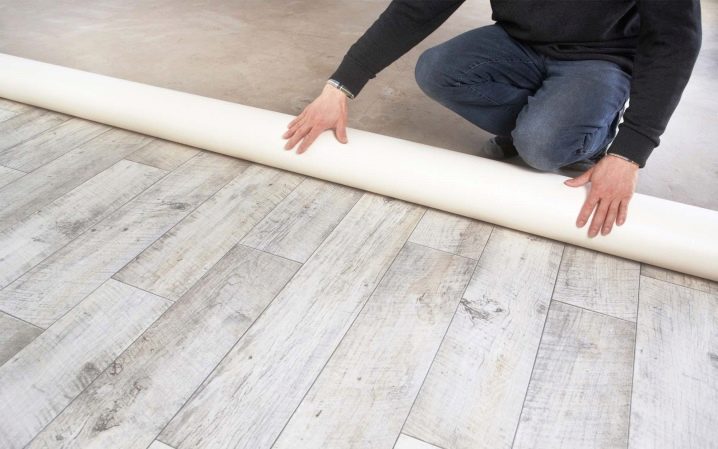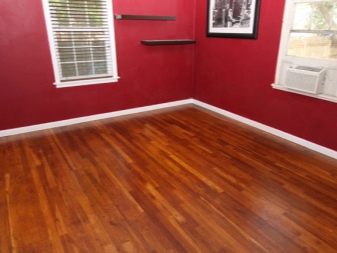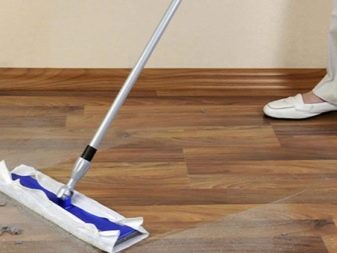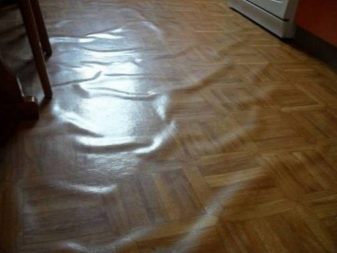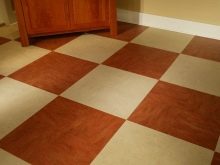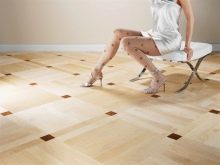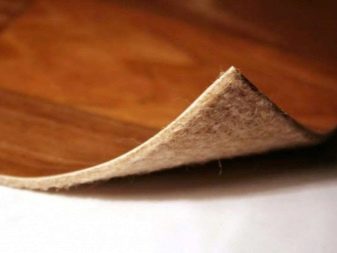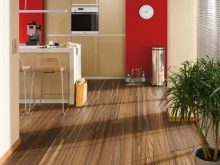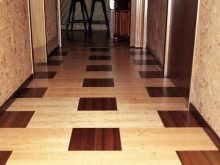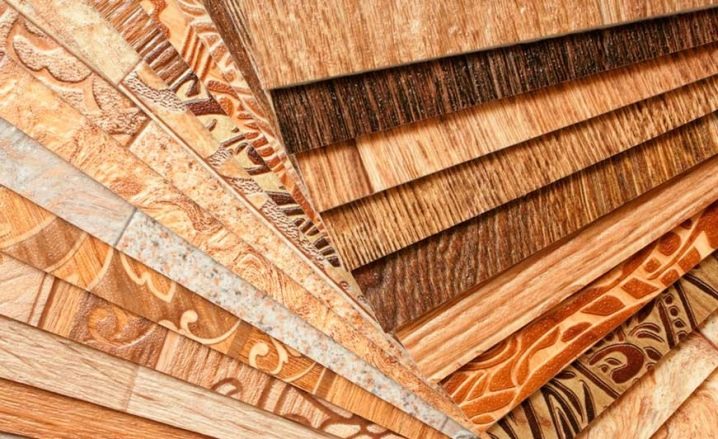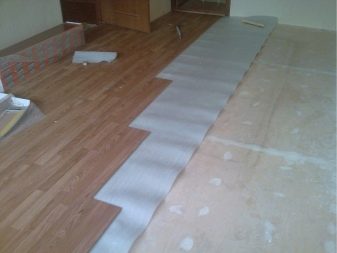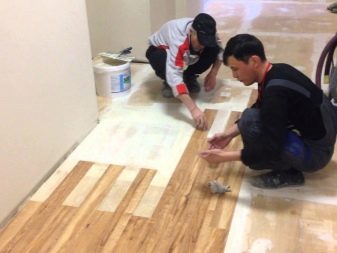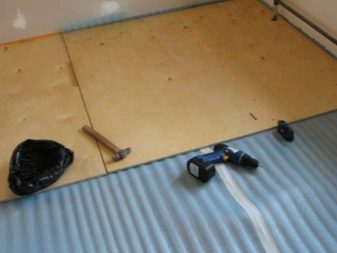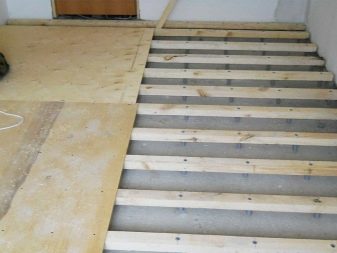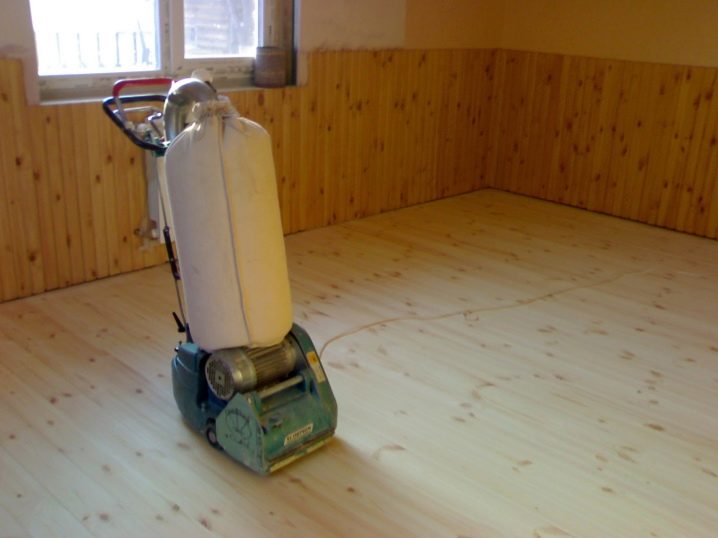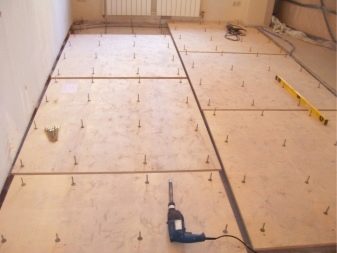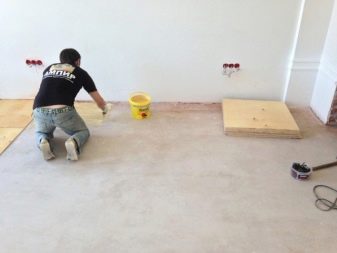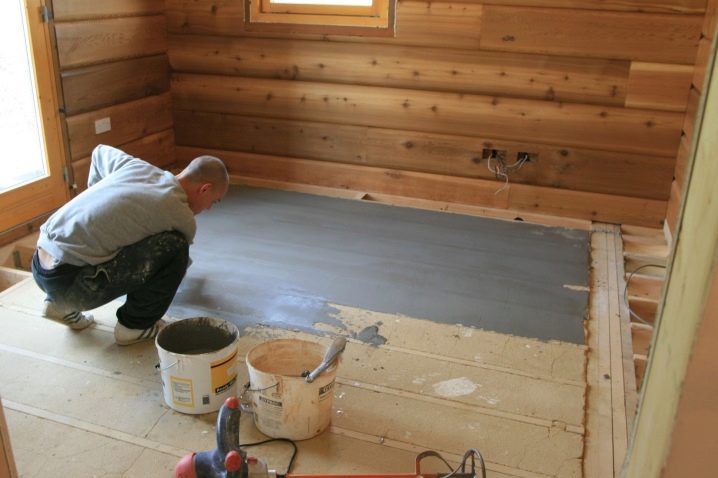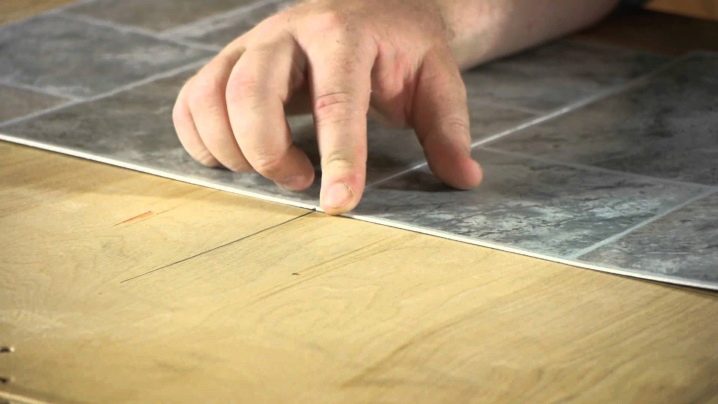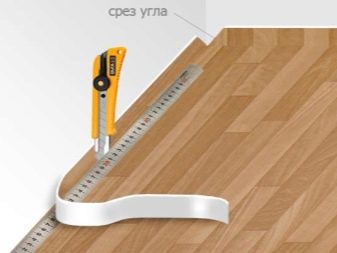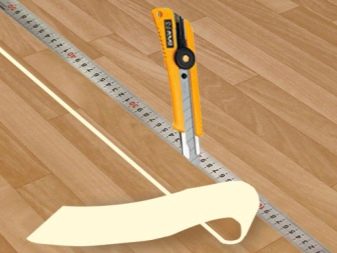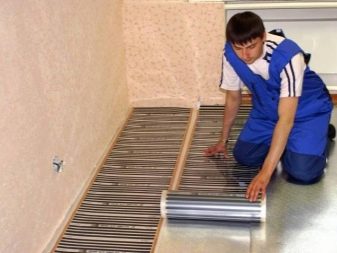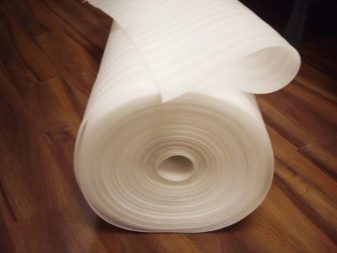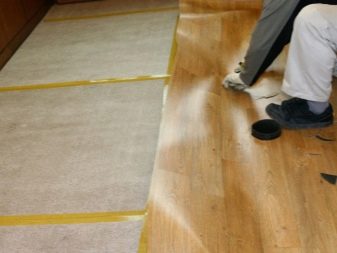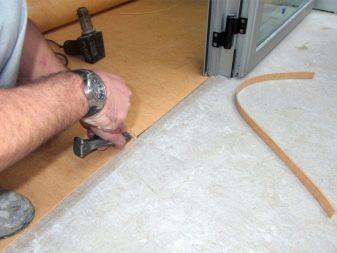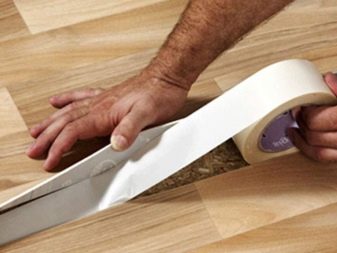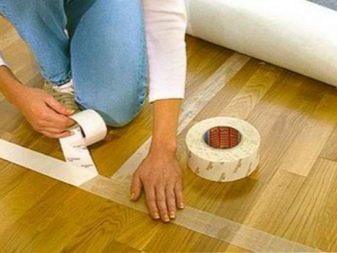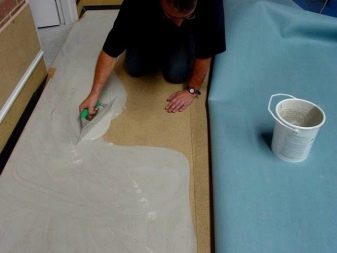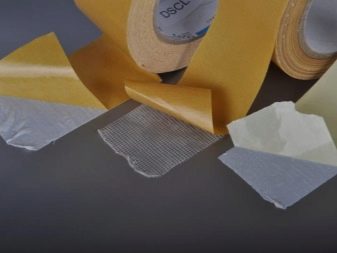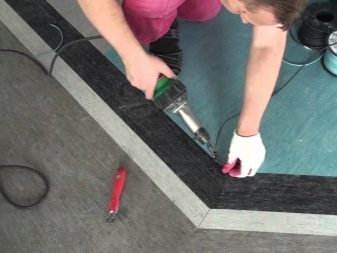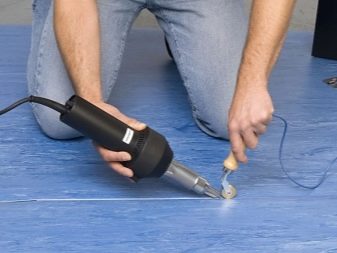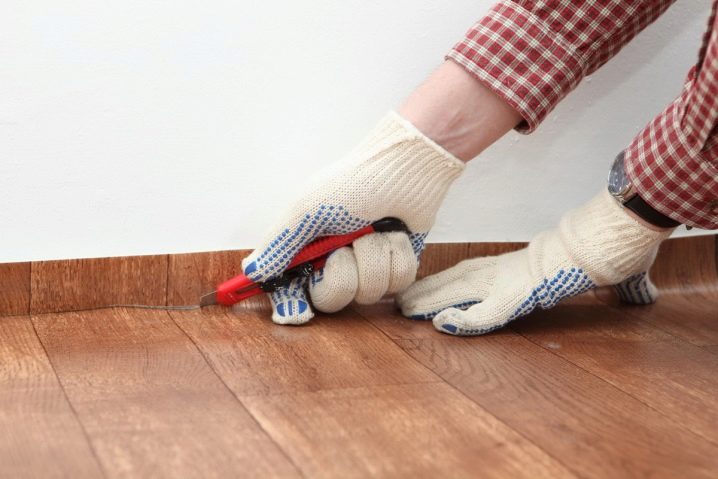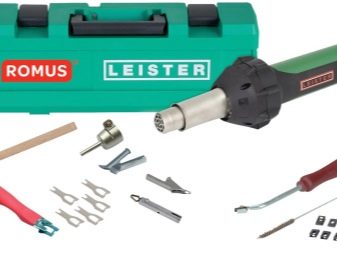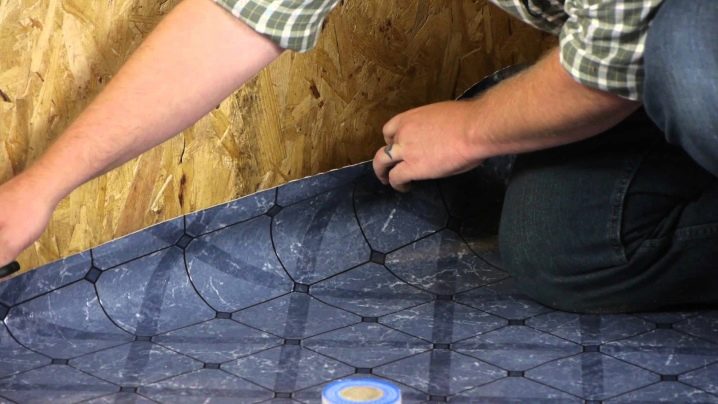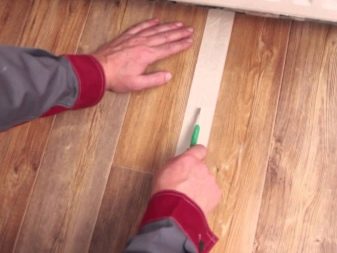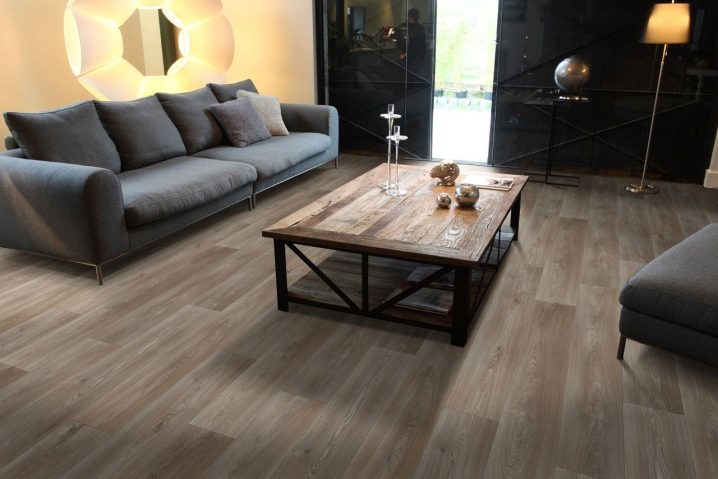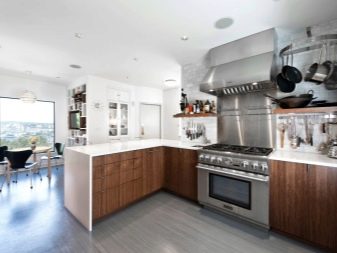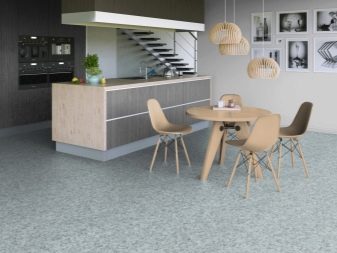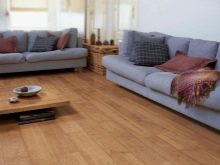How to lay linoleum on a wooden floor?
The modern flooring market offers a huge range of products. One of the most sought-after is linoleum. Its popularity is due to the variety of colors and textures, durability and ease of maintenance. Professionals quickly lay it on a concrete floor, but for laying the canvas over wooden boards they use a different technology.
Pros and cons of the product
Like any other material, linoleum has its advantages and disadvantages.
pros
- Large selection of coating sizes.
- Wide range of colors.
- The variety of textures.
- The ability to avoid seams in any room. The seamlessness of the flooring is aesthetically pleasing.
- Easy and quick installation with simple tools.
- The average degree of heat and sound insulation.
- High moisture resistance.
- Resistance to any household chemicals when cleaning.
- The ability to use when installing a heated floor.
- Long service life without loss of appearance.
- Lack of special care (polishes, polishes and varnishes are not required).
- Conservative value.
Minuses
- The coating of household class has a low degree of mechanical strength. With careless handling possible dents and damage, for example, from furniture.
- Types of poor quality exude unpleasant chemical odors for some time after installation.
- Flammability Cheap variety of burning emits toxic substances.
- Special requirements for the preparation of the surface of the floor before laying.
Which is better?
Linoleum is of two types: natural and polymeric.
The top layer of natural consists of natural components, such as cork, small sawdust, resin, mineral substances. The bottom layer is usually made of jute fiber.
Such linoleum does not burn, does not accumulate static electricity, is an environmentally friendly material. However, buyers can stop its high cost, low moisture resistance and uniformity of shades.
PVC linoleum is most popular.The color scale and variety of ornaments allows you to choose it to any kind of interior.
Relin - multilayer rubber linoleum with a thickness of about 3 mm. The composition is based on a mixture of bitumen, crushed rubber or rubber. The top layer is made of colored rubber of small thickness.
Alkyd material is resistant to wiping, has a high degree of noise absorption and thermal insulation. But it is very fragile, therefore it is not recommended for wooden floors.
Kolloksilinovoy canvas has no basis. For its production is used nitrocellulose. Absolute resistance to moisture, elasticity and incombustibility make the material quite popular.
When choosing a floor covering it is important to focus on the foundation over which it will fit. If it is a wooden floor, then from natural material, despite the mass of advantages, it is necessary to refuse.
Synthetic linoleum is more moisture resistant, so it does not rot. In addition, a good degree of thermal and sound insulation is characteristic of a multilayer polymer coating. Experts advise to acquire coatings not less than 3 mm thick.
The choice of flooring depends on its area of use,since it is characterized by the level of load, resistance to abrasion, impact resistance. Service life depends on it.
Household - the thinnest material, suitable only for rooms with low levels of terrain: bedrooms, pantries. For the average level it is better to choose a semi-commercial type of linoleum. It is usually laid in the kitchen, living room or hallway. The floor in public places and offices is preferable to equip the material of commercial class.
This classification of wear resistance and abrasion depends on the thickness of the coating and the structure of materials. Therefore, when buying in the first place should pay attention to these criteria. PVC coating up to 3 mm thick has a lower felt layer or a layer of fiberglass, which is covered with a polymer film. Linoleum on a woven base does not have a layer of fiberglass, it is thinner, but more resistant to abrasion and other external factors.
The thinnest floor covering is baseless. Such material has no basis and is intended for those rooms where excess moisture is possible.
Preparing the base
Preparing the baseBefore how to start laying the floorassess the condition of the wooden floor. If necessary, troubleshoot. Boards should not bend and creak.
It is necessary to check the reliability of all their mounts. There should be no traces of fungi, mold and insects, as well as rusty nails on the floor. Professionals are advised to inspect the logs, even if the boards are visually intact.
When they are tapped, a dull sound, as a rule, indicates the presence of rotten patches. Before laying linoleum with a construction level, it is important to ensure that the floor is level.
If a fungus is detected, then mechanical cleaning is impossible, as spores penetrate deep into the wood. In this case, you should completely change the wooden flooring. In the presence of insects, it is necessary either to replace the boards struck by them, or to treat them with special protective preparations.
Old painted floor sandpaper to remove old paint. If it keeps well, it is enough to remove only the exfoliated areas.
Speakers heads nails and screws should be deepened or removed. If the floor is uneven, then it is cycled or covered with plywood boards.
Scraping is used in the event that the flooring is durable, does not have significant skews in height, but its surface has irregularities.To eliminate defects, use a manual planer or its electrical version, as well as a scraper machine. After it is necessary to seal all the cracks and grooves with a putty, otherwise irregularities will appear on the linoleum.
We eliminate irregularities
In the presence of significant differences floor align. This process is carried out in several ways:
- Sheet material in the form of plywood, chipboard or hardboard. The thickness of the sheet depends on the degree of deflection of boards and varies from 8 to 12 mm. Laying of plywood boards is carried out joint to the joint. In the absence of significant irregularities, the sheets are fixed either with a special parquet glue or with a mixture of PVA with plaster. The strength of the connection will provide nails or self-tapping screws with a countersunk head that do not protrude above the floor surface. The seams between the shields must be filled. The floor of plywood should be covered with a layer of linseed oil.
- Filling of the base with putty on the basis of PVA. It consists of sawdust mixed with glue. The method does not require large cash costs and is simple in execution. The algorithm works as follows:
- The surface is cleaned and sanded.
- Self-tapping screws strengthen the wobbling and creaking boards.
- Put the mixture and align it.
- It is necessary to allow to dry up to two days.
- Self-leveling compounds - The most inappropriate option for wooden flooring. It should be borne in mind that cement mortars on a wooden floor should not be used categorically. In this case, choose a special mixture, which in its composition contain additives and reinforcing fibers. Old floor before applying the solution is cleaned and degreased. The gaps are removed with foam or sealant. The surface is grounded in several layers.
Coating preparation
After preparing the wooden flooring and choosing linoleum, it is necessary to prepare the floor covering for installation.
To begin with, it is adapted, or, in other words, rolled out on the floor and left for several days. In places of poor adhesion to the material weights can be put on the material. This is necessary for straightening the material and convenient work in the future, since it acquires room temperature, it becomes more plastic.
When buying and transporting it is important to eliminate strong creases of the web.
If you avoid kinks did not work, then synthetic linoleum can be heated with a hairdryer and press as hard as possible with a heavy object.Unfortunately, alignment with this method is impossible for natural coating.
After linoleum has laid down, it is cut out on the necessary sizes. When cutting a synthetic canvas, a seam allowance is left at the edges for shrinkage, which will be closed by the plinths. All irregularities in the form of protrusions, pipes and thresholds are marked with a pen, then cut out with a construction knife.
How to warm?
In some cases, the owners additionally placed under the linoleum substrate. It plays the role of a silencer and heat insulator.
The choice of insulation is especially important if the floor has not been leveled using plywood sheets. In this case, it will not only provide warmth, but also correct minor irregularities.
Types of substrate:
- Bung. Excellent natural and safe insulation. Application is possible only in the presence of small loads on the floor, because the material has a low degree of strength. Also, when buying a cork substrate stops the high cost.
- Jute. High resistance to moisture and rot, as well as incombustibility makes jute filler popular.
- Linen. Linen substrates are more suitable for preventing the occurrence of mold.
- Felt. The excellent heat-insulating material capable in addition to hide roughnesses. Felt material is resistant to heels and heavy furniture.
- Combined options include several of the above materials. They are a good heat insulator.
- PVC insulation in demand due to affordability. Foamed versions are good in quality sound and heat insulators.
Most often, owners buy linoleum with an already pasted backing.
Styling methods
Ways of laying linoleum are divided into adhesive and glueless. Both options provide a reliable fixation of the coating, however, for floors experiencing heavy loads, the use of the adhesive method is optimal.
Beskleevoy
The floor in small rooms can be covered with linoleum without using glue. The canvas is laid, smoothed from the center to the edges and fixed around the perimeter with the help of baseboards and in the doorway with a threshold. To do this, the fastening elements are simply nailed to the base.
The disadvantage of the method is the rapid wear of the material, the appearance of waves during operation.
Adhesive
This installation involves two ways:
- With double sided tape. To do this, it is glued around the perimeter of the room. To improve the fixation, it is permissible to lay additional strips over the entire area. Then the linoleum is staged in stages, gradually unfolding it from the roll and as the protective coating is removed from the tape.
- On glue. Adhesive fixation of the coating is most thorough, but time consuming. It should be noted that in large rooms is the only way to lay linoleum. Special glue for gluing is applied with a spatula in parts, gradually unrolling the roll. Waiting time - 20 minutes. Only then can you press and fix the material on the floor. It is possible to operate a floor covering only after 7-10 days.
Special formulations that are used for the adhesive method:
- Bustilat is a synthetic glue intended for rigid fixation of coatings.
- Acrylate is a universal acrylic polymer designed for reliable gluing of different types of linoleum to the surface of concrete, wood and metal.
- Bituminous mastic is used to work with rolled coatings on fabric basis.
- Rubber-based mastic is used as a fixative for rubber or PVC linoleum without a substrate.
How to fix the joints?
Since the glueless method implies the absence of joints when laying, it is necessary to study the options for fixing parts of the coating to implement the adhesive method. The following materials are necessary for this: special glue, double-sided tape or cold welding. Sometimes hot welding is used.
With adhesive tape and glue
In this case, a double-sided tape is laid under the joint along the entire length. Glued parts stacked overlap by 8-10 cm and fixed.
Adhesive tape should not reach the place of overlap at a distance of 2 to 3 cm.
In the center of the joint, linoleum is cut simultaneously to the entire depth. Trimming cleaned. The floor at the site of the seam is either coated with glue or laid with double-sided tape, after which the material is ironed with a roller.
Cold welding
The action algorithm for welding linoleum seam is as follows:
- The surface of the parts to be glued is fixed in the area of the seam with the help of double-sided tape. To do this, the tape is first glued to the base in two strips.They remove the upper protective layer, freeing the adhesive surface. Overlap the parts of linoleum.
- With a construction knife, the coating is cut simultaneously in the middle of the overlap.
- The resulting joint at the top is glued with masking tape, which is cut along the seam.
- The seam is filled with cold welding with a needle so that it protrudes slightly above the duct tape.
- An hour later, the masking tape can be removed.
It should be noted that the complete adhesion of the glued parts will come in 8 hours, therefore, the floor cannot be operated immediately.
As a result of welding, the seam is waterproof and almost imperceptible.
Hot welding
For very dense homogeneous linoleum without a substrate, experts advise the use of hot welding to ensure the web reliability and solidity.
This process is more complicated than the methods described above and requires specialized tools and skills. Joints are fixed after gluing linoleum to the floor.
When hot welding, you must perform the following steps:
- Cut the seam with a construction knife to the full depth of the coating.
- Strip the edges.
- Industrial hair dryer set to a temperature of up to 350 degrees and fit the nozzle of the desired size.
- Polymeric fusible cord to place in the nozzle and wait for the tool to heat.
- After heating, move the nozzle along the seam. In this case, the cord will melt and fill it.
Joints made in this way are absolutely waterproof and wear-resistant.
Flooring rules
There are several basic principles of laying linoleum on a wooden floor:
- The canvas is laid along the boards.
- When laying linoleum should be aware that the joints should fall in the middle of the floor board.
- The average temperature in the room when laying material should not exceed 20 degrees.
- Marble or monochrome canvases are advised to be arranged in the direction of the light beam, which will make the seams invisible.
- It is important not to forget that when installing on scotch tape or glue, parts of linoleum are overlapped, so when cutting, you should leave 8-10 cm for it.
Required tools
The most affordable tools that you may need when laying linoleum yourself are:
- Roulette or 2 meter ruler.
- Pen or pencil.
- Construction knife or scissors for cutting material.
- Spatula with glue method.
- Roller.
- Nails and screws.
- Hammer or screwdriver.
In addition, when preparing the base may require a plane or a scraper.
Mounting technology
Summing up all the information, you can imagine the technology of laying linoleum in the form of the following algorithm:
- Inspection of the wooden coating for defects and insects.
- Check boards for strength and "creakiness".
- Cleaning the floor from debris.
- Sanding wooden boards from old paint. It is quite possible to do it yourself, using hand tools.
- Treatment with protective agents and impregnations.
- Drying.
- Leveling the floor in a suitable way:
- using plywood sheets;
- fillings with PVA based putty;
- using self-leveling compounds.
- Acclimatization of linoleum. The material in the roll is placed indoors for several hours in order to acquire room temperature.
- Linoleum is rolled on the floor and properly cut depending on the geometry of the room. If joints are planned, it is necessary to provide a margin for overlapping.You should also leave allowances for baseboards.
- The material is left in the room for several days. During this time, the canvas should be cracked. If there are deep creases, weighting should be put on them.
- The final fit of the canvas with the exact dimensions and noise in the form of pipes, thresholds, protrusions.
- When laying in a glue-free way, the final stage is laying the baseboards around the perimeter of the room, setting thresholds or in their absence of a protective strip.
- In the case of adhesive styling, the linoleum is glued to the base after fitting. After that, fix the joints. Methods of fastening can be different: tape, glue, cold or hot welding.
Beautiful interiors
It is believed that linoleum - the simplest option for the floor. However, many designers are happy to use it for interior design.
Heterogeneous linoleum is now popular. Due to the fact that a pattern is applied on its upper layer, which is then covered with a protective film, various textures are obtained. Linoleum skillfully imitates wood, tile, stone. It is characterized by a variety of color shades that do not fade and do not wear out.
Modern technologies allow manufacturers to produce high-quality types of linoleum, which according to the characteristics is not inferior to laminate and parquet middle class. Therefore, the material is suitable for installation in any interior.
On the kitchen
Most often, linoleum is laid in the kitchen. Since this room is a place with a high degree of operation, the choice of flooring should be approached thoroughly.
The kitchen floor is exposed to moisture, temperature changes, grease, mechanical loads, therefore There are several criteria for the floor covering:
- Moisture resistance.
- Low hygroscopicity.
- The surface should not be slippery.
- Immunity to insects and rot.
- High level of abrasion, preservation of appearance for a long time, despite the intense load.
- Durability.
Experts advise to choose the canvas in such a way that when laying was as little as possible seams.
In the apartment
Natural varieties of linoleum are practical and eco-friendly, therefore they are suitable for a children's room. Bright colors will make the interior notes of humor, comfort and joy.
The bathroom and the corridor, especially in the Khrushchev, are characterized by small size and poor lighting. These rooms have a high degree of load. When choosing linoleum, experts advise to pay attention to materials with a high level of wear resistance with anti-slip coating.
In the bedroom, it would be nice to look at the canvas with the noise absorbing effect of neutral shades.
The interior of the living room will not lose, if instead of laminate or parquet the floor will be covered with linoleum with their imitation. The latest technology allows you to transfer all the nuances of texture to perfection.
In a private house
In the country or in a cottage located in areas of high humidity, designers suggest using linoleum to cover the ground floor. There are interesting options that imitate any natural materials that use different geometric and plant patterns. The main thing - compliance with the general concept of the interior, harmony and aesthetics.
An important factor when choosing a coating is the color gamut. Optimal will be the dependence of color on the location of the windows in the room.
For rooms with windows facing south, there is an excess of light,in this case, preference is better to give the cold shades. For northern windows, warm colors are appropriate - peach, brown, mustard.
For more information on how to properly lay linoleum on a wooden floor, see the video below.
